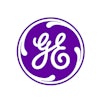
(OTech) Until last year, the Food and Drug Administration regulated PACS devices as accessories to the imaging modalities with which they were used. In July 2000, the FDA changed course, however, issuing new guidelines for medical image management devices to recognize the significant expansion of their functionality.
But the new ruling has led to a degree of market confusion among vendors regarding the need for a 510(k) application for their PACS technology. Gaining clearance for PACS technology used to be relatively straightforward. For example, PACS devices such as medical image digitizers, image viewing workstations, and medical image printers were considered by the FDA to be accessories to stationary x-ray, MRI, or CT systems.
The new rules, called "Guidance for the Submission of Premarket Notifications for Medical Image Management Devices," are applicable to medical devices that provide functions related to the management of medical images after acquisition, of which PACS (as defined by the FDA), is only one of five classifications. However, the guidance does not address image processing devices that utilize artificial intelligence or other techniques to identify abnormalities in medical images or assist in diagnosis.
The new "Classifications for Medical Image Management Devices" are:
- Medical image storage device (892.2010) is a device that provides electronic storage and retrieval functions for medical images. Examples include devices employing magnetic and optical discs, magnetic tape, and digital memory. This device type is Class I and is exempt from 510(k) requirements.
- Medical image communications device (892.2020) is a device that provides electronic transfer of medical image data between medical devices. It may include physical communications media, modems, interfaces, and communications protocols. This device is also Class I and is exempt from 510(k) requirements.
- Medical image digitizer (892.2030) is a device intended to convert an analog medical image into a digital format. Examples include systems employing video framegrabbers and scanners that use lasers or charge-coupled devices. This is a Class II device and a 510(k) application must be submitted to the FDA.
- Medical image hardcopy device (892.2040) is any device that produces a visible printed record of a medical image and associated identification information. Examples include multiformat cameras and laser printers. These are Class II devices, and a 510(k) application must be submitted to FDA.
- Picture archiving and communications systems (892.2050) provide one or more capabilities relating to the acceptance, transfer, display, storage, and digital processing of medical images. PACS hardware components may include workstations, digitizers, communications devices, computers, video monitors, magnetic, optical disk, or other digital data storage devices, and hardcopy devices. Software components may provide functions for performing operations related to image manipulation, enhancement, compression, or quantification. This is a Class II device and a 510(k) application must be submitted to the FDA.
Classifications 892.2010 (medical image storage device) and 892.2020 (medical image communication device) are intended to include all medical image management devices whose principal functions are communications or storage. Classification 892.2050 (PACS) is intended to cover devices that have not been included in the other medical image management device classifications (i.e. 892.2010-2040).
The confusion regarding the applicability of 892.2050 (PACS) has occurred because the term "PACS" has often been used by the industry to refer to all types of medical image management devices. However, the FDA classification in 892.2050 is not intended to include products whose principal function is only medical image communications and/or storage. These devices are classified Class I under 892.2010 and 892.2020.
In many cases it is not readily apparent if a device should be classified as a medical image communications device, a medical image storage device, or as a PACS. In these cases the classification is determined by reviewing the additional functions performed by the product.
Simple manipulations that do not alter the image data, such as window and level, pan and zoom, and image annotation are considered to be within the scope of the communications and storage functions and no 510(k) is required. A typical image viewing workstation falls within this classification.
However, image processing functions, which are intended to alter the image data (e.g. filtering, multiplanar reconstruction, and 3-D reconstruction), are considered to be outside the scope of the storage and communications functions and fall into the PACS classification, which requires a 510(k) application.
Also, complex quantitative functions (e.g. measurements, arterial stenosis evaluation, ventricular volume calculations, and calcium scoring) are not considered to be communications and storage functions, and these types of functions are treated as PACS, requiring a 510(k) application.
By Carl Alletto
AuntMinnie.com contributing editor
April 12, 2001
Carl Alletto is a regulatory consultant at OTech, a healthcare technology training and consulting firm. He can be reached at [email protected].
Click here to post your comments about this story in our PACS Digital Community. Please include the headline of the article in your message.
Copyright © 2001 AuntMinnie.com


















